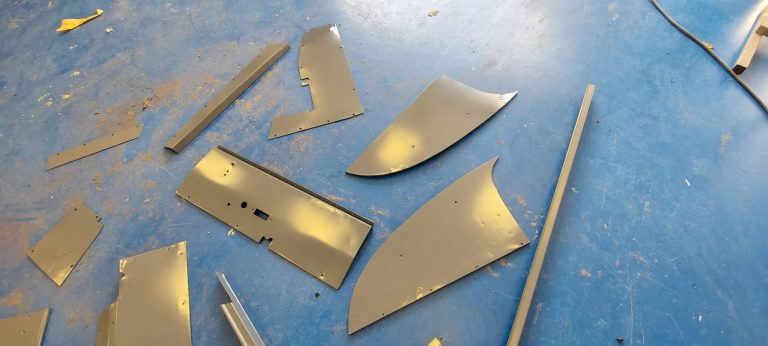
First Steps – Priming Parts on the 1955 Aston Martin DB2/4
Previously, our in-house technician Lydia was busy preparing some components and pieces from the 1955 Aston Martin DB2/4 for paint. Well, those parts have now

Managing Director – Bridge Classic Cars

Previously, our in-house technician Lydia was busy preparing some components and pieces from the 1955 Aston Martin DB2/4 for paint. Well, those parts have now
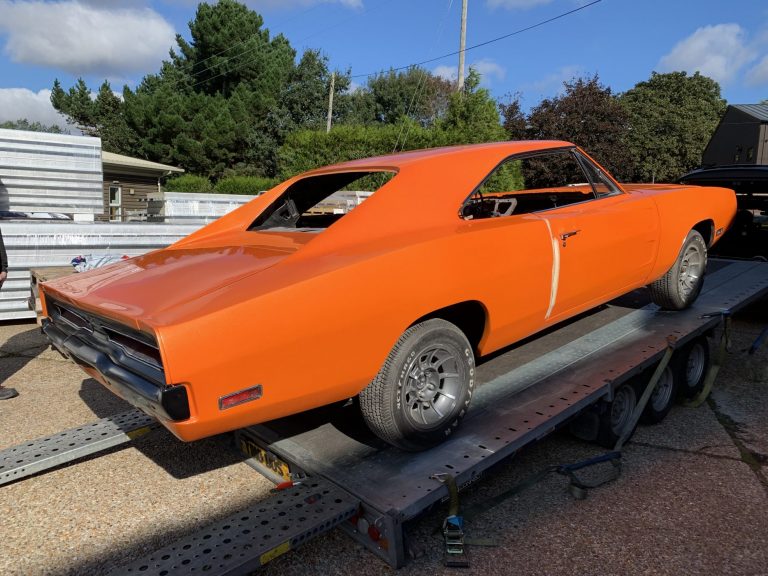
Just arrived at Bridge Classic Cars is this gorgeous 1970 Dodge Charger for interior fit out. Expect to see more of this iconic second-generation Charger

This is indeed a wonderful example of 1930s excess and style. Almost industrial in its engineering but so ornate in its look. It is of

The Aston Martin DB5. Many believe it to be The Most Famous Car in the World. It’s claimed by some that over half the worlds
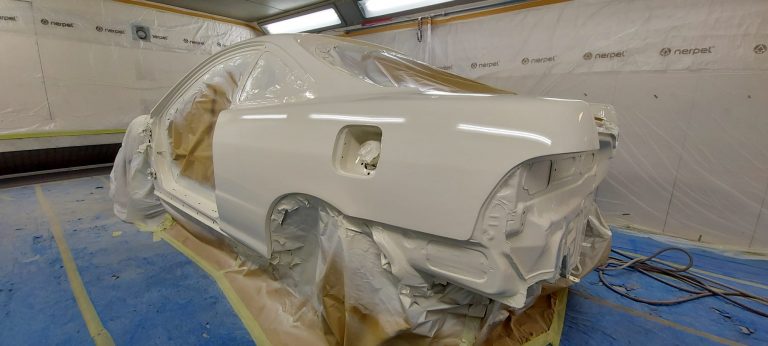
Bridge Classic Cars have been working on a bit of a modern classic recently. This 1998 Honda Integra Type R has previously had a list
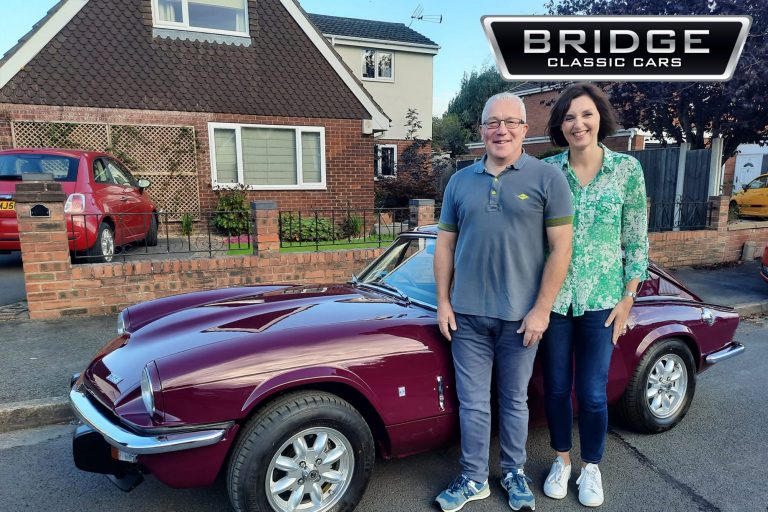
Congratulations to the winners of our Bridge Classic Cars Competitions 1974 Triumph GT6 who recently took delivery of this wonderful example of a Magenta GT6.
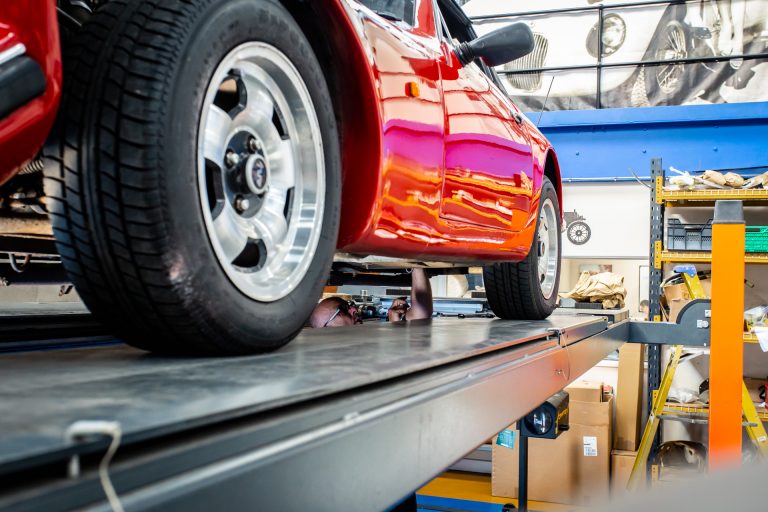
Recently our technician Paul completed a full service and inspection on the 1989 TVR S2 2.9 V6 in at Bridge Classic Cars. As part of

The replacement fuel tanks are now secured in their new home at the rear of the 1971 Jaguar XJ6 at Bridge Classic Cars. After much
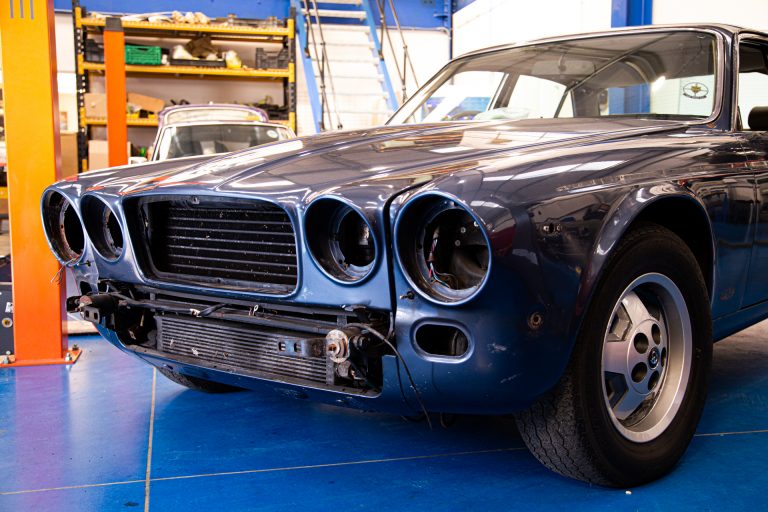
It’s been a little while since the last update on the 1987 Daimler Double Six currently in with us at Bridge Classic Cars. Since the
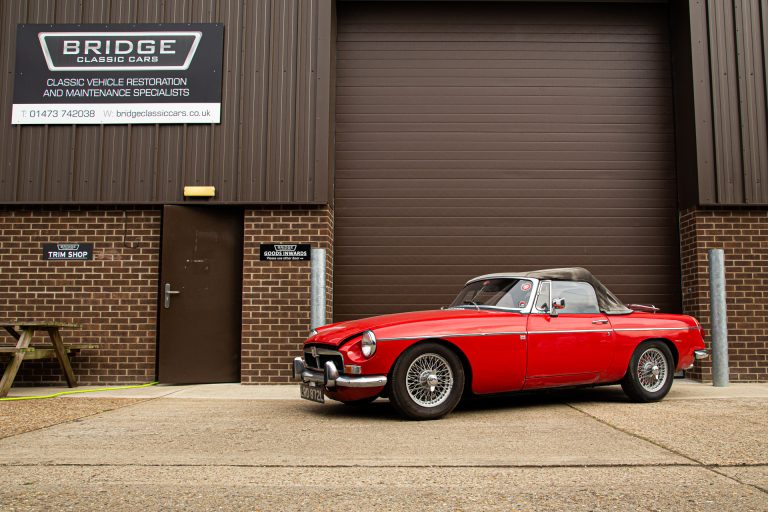
The MG B Roadster. A staple of British Sportscars for decades. Beloved by many for its small, lightweight feel but its solid reliability. This particular
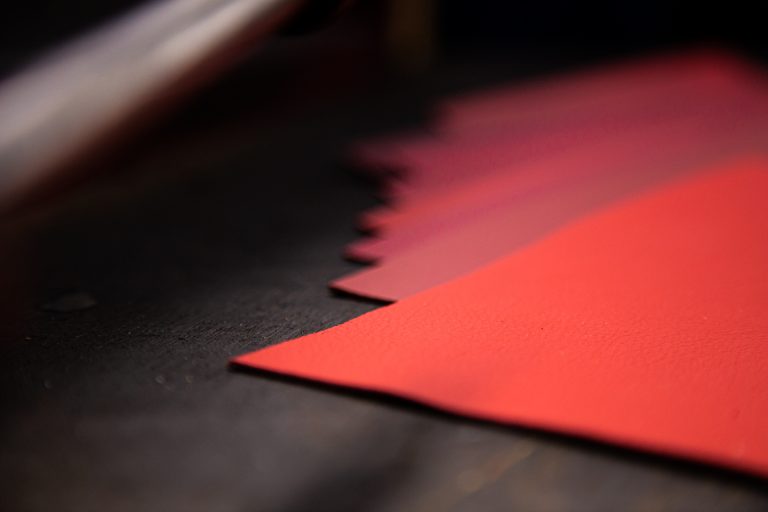
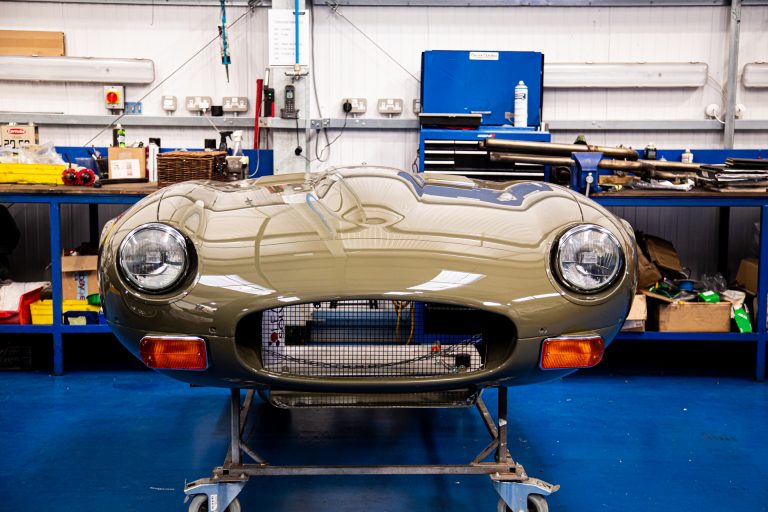
One of the most recognisable parts of a Jaguar E Type is its long, elegant bonnet. It is also one of the most beautiful shapes
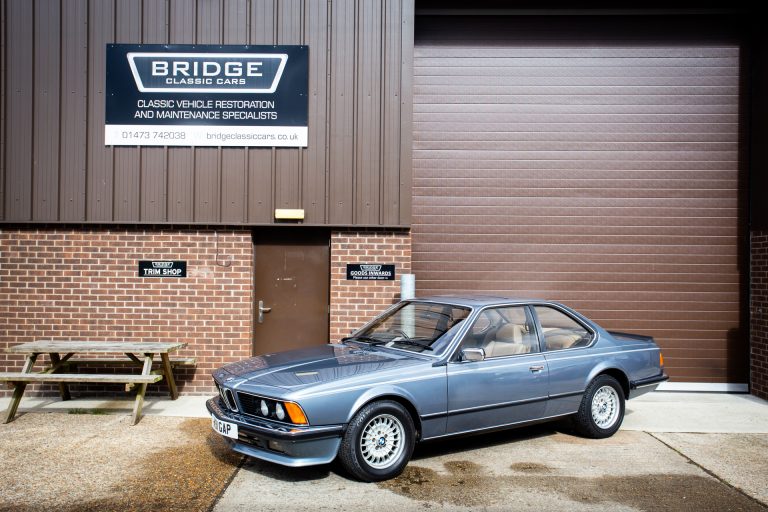
An icon of 1980s style and presence. The legendary BMW 635CSi. This particular example is a 1984 car. the E24 635CSi was (and still is)
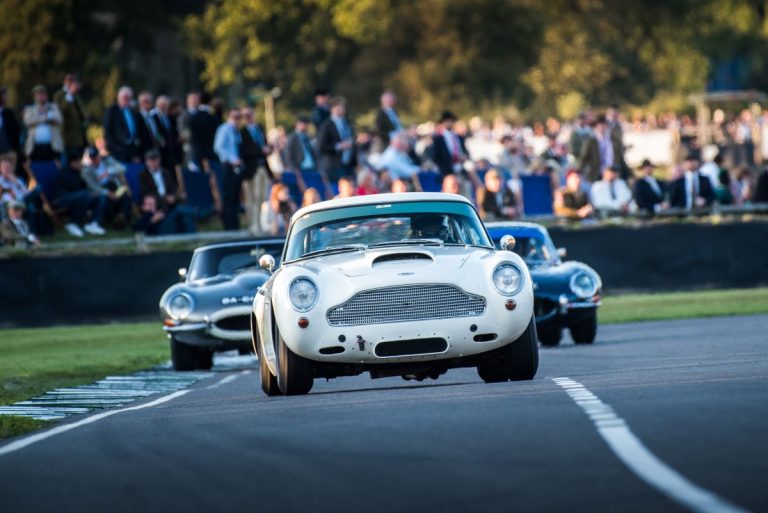
October 16-17th will see the annual running of the Goodwood Members Meeting. Bridge Classic Cars will be there! Head over to Stand 47 (Just outside

Scott has been hard at work on the one-off 1973 Jaguar E-Type Series 3 Roadster that is being built here at Bridge Classic Cars. This
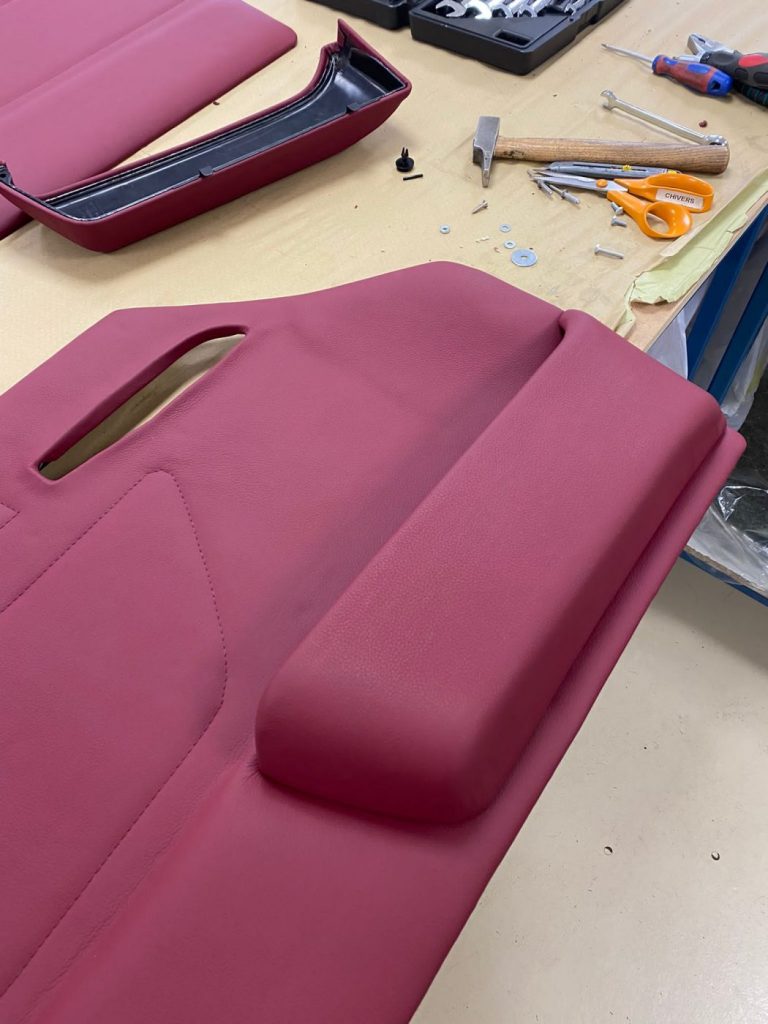
The art of interior trim is something our in-house trim experts have mastered over years of experience. A great example of this is the door
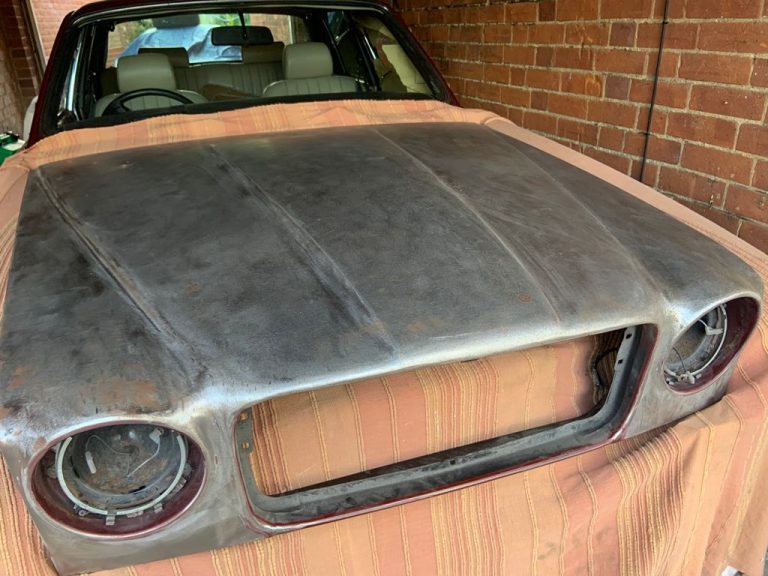
This 1984 Jaguar XJ has recently had a respray done on it by another Bodyshop. It will be coming in soon to us here at

This is a perfect example of the level our in-house trim experts at Bridge Classic Cars work to. The first photo shows what was left

With American V8s the first thing you notice in the engine bay is the Rocker Covers. One of the most iconic of these is the
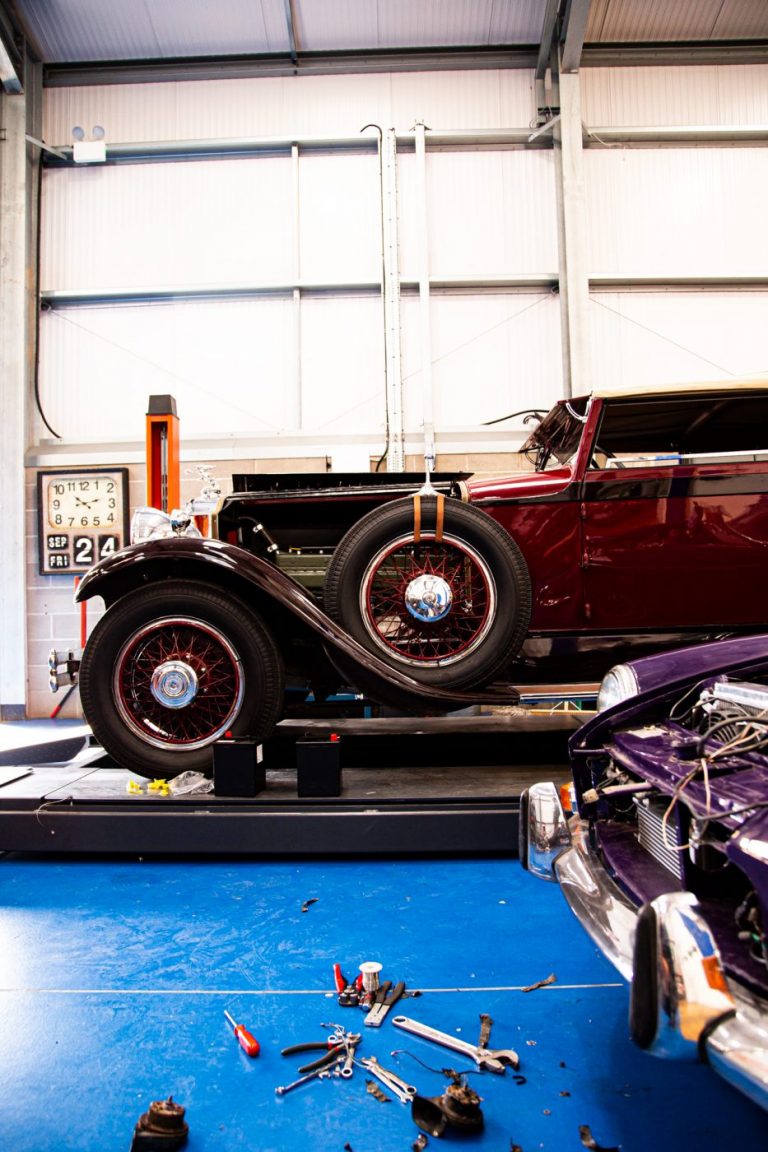
It’s not every day that you get asked to service such a rare and unique piece of American pre-war history. But when the customer arms
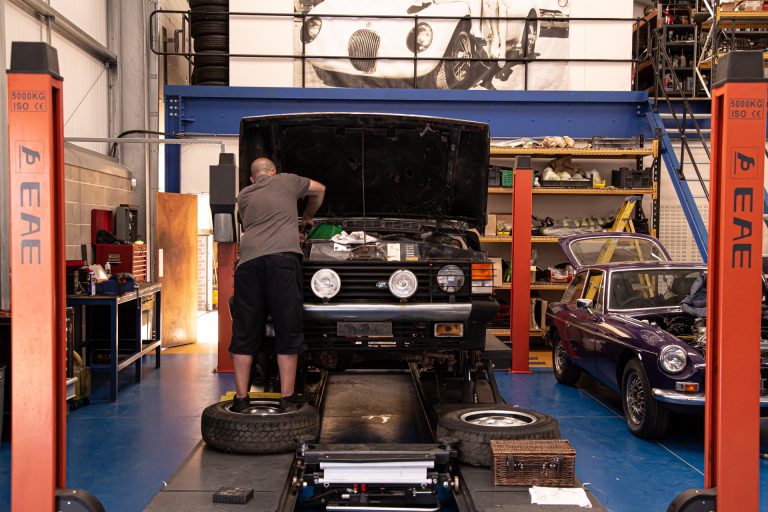
The last time we showed you the assessment done on the wonderful 1990 Range Rover CSK that we currently have in at Bridge Classic Cars
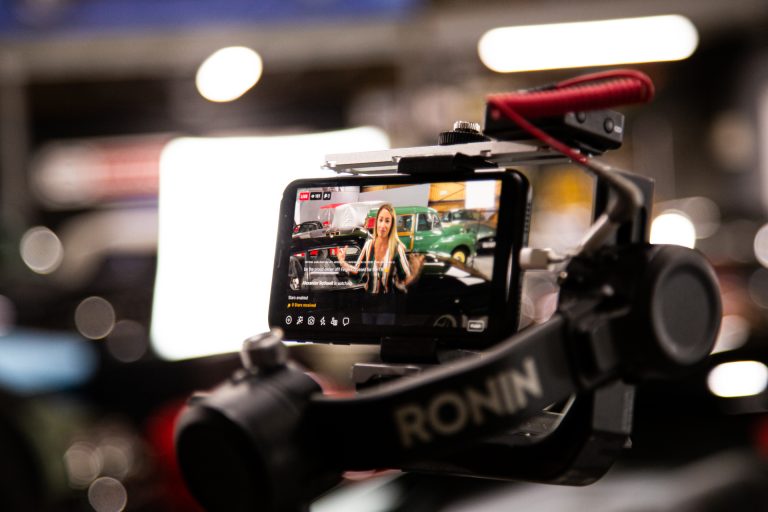
There is always a winner with our live draws. On Thursday the 23rd of September that just happened to be Ian Spellman and Rob Richardson.
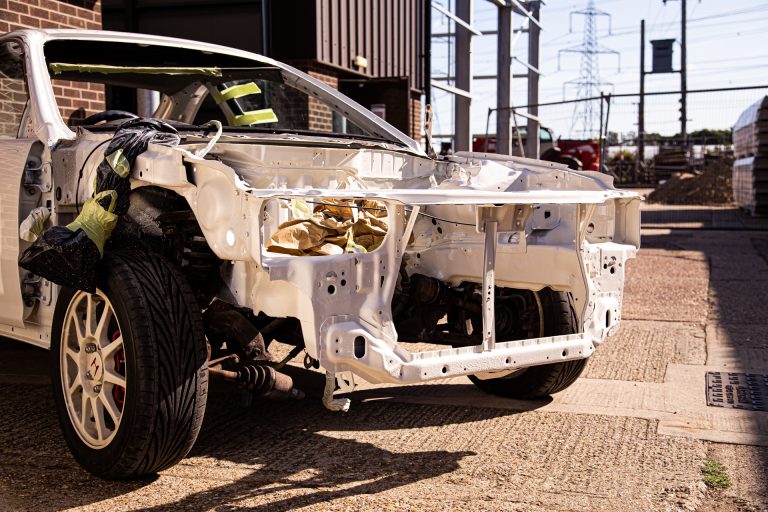
This is probably the nicest 1998 Honda Integra Type R you will see. After having all its metalwork done, it was turned over to our
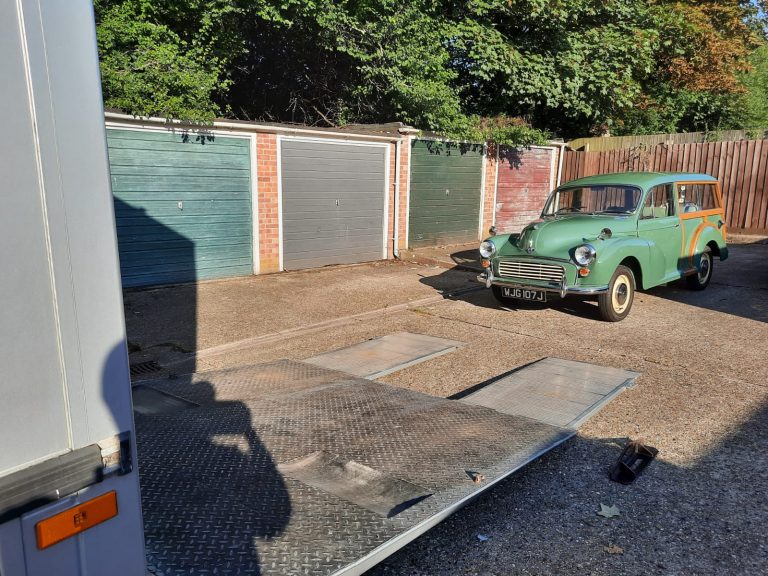
We have a rare treat coming into us here at Bridge Classic Cars very soon. This lovely little 1971 Morris Traveller 1000. This piece of

Time for an update on the interior of the 1956 Jensen 541 we have here at Bridge Classic Cars. In the last update on the
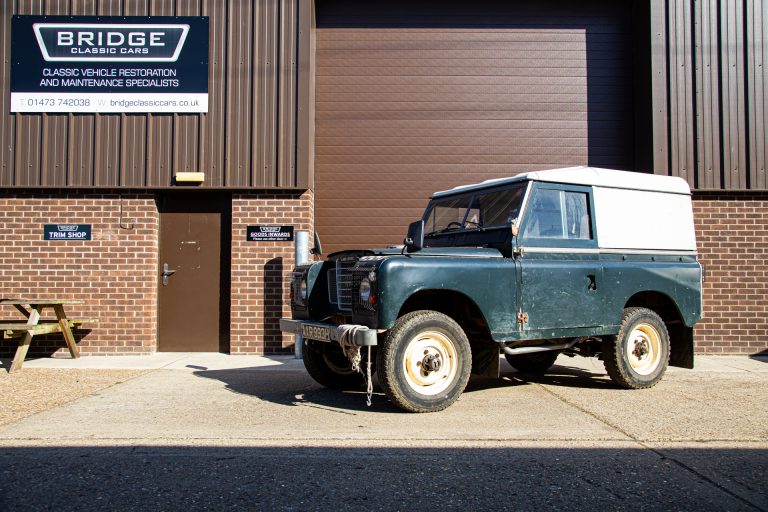
This lovely, honest 1970 Land Rover Series III has just arrived at the Bridge Classic Cars workshop in Suffolk, UK to begin its restoration journey.
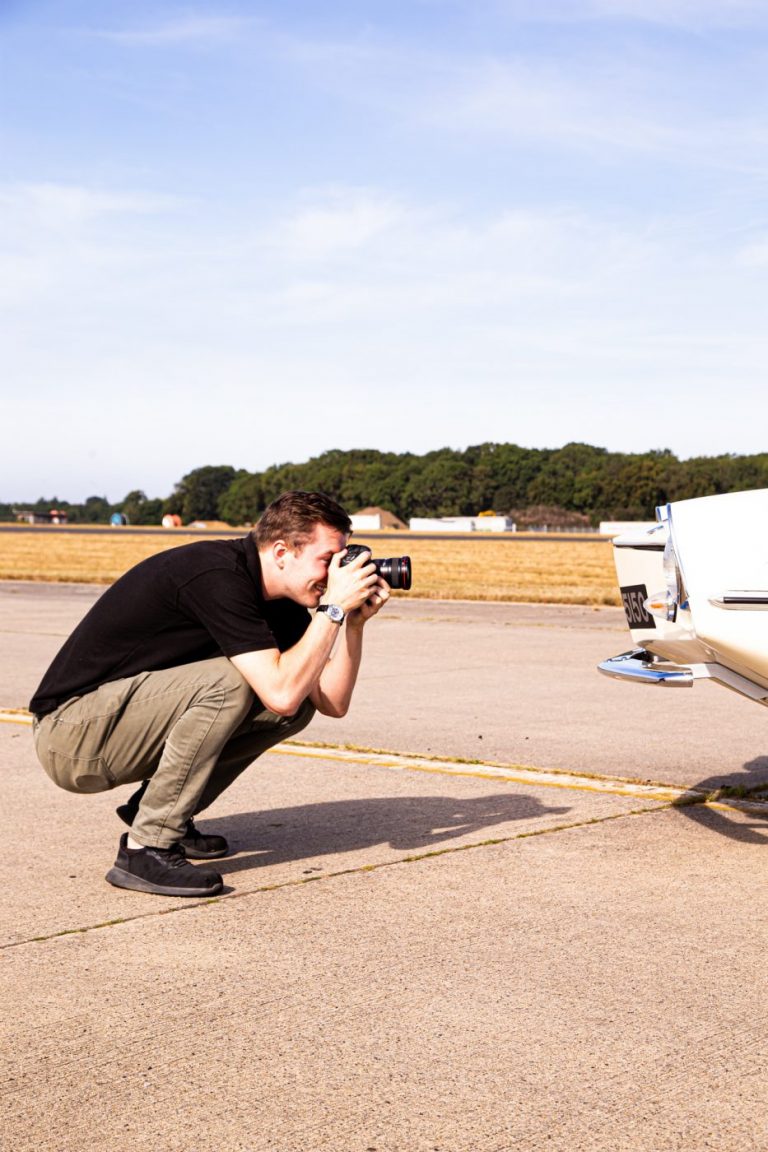
The hen’s tooth that is our 1965 Amphicar. A lot of love and time has gone into making sure this half car/half boat is ship-shape
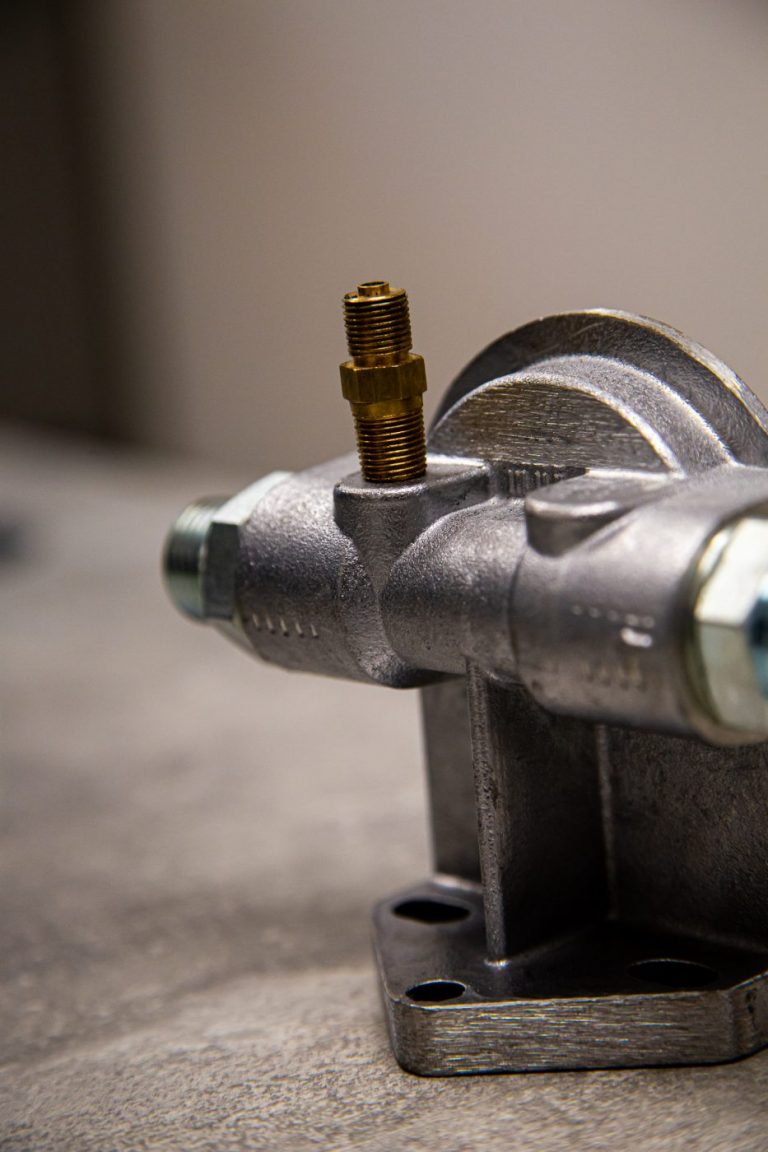
Previously on the 1973 MG B GT V8, we were installing the electric fans to help keep that freshly rebuilt V8 cool. Another integral part
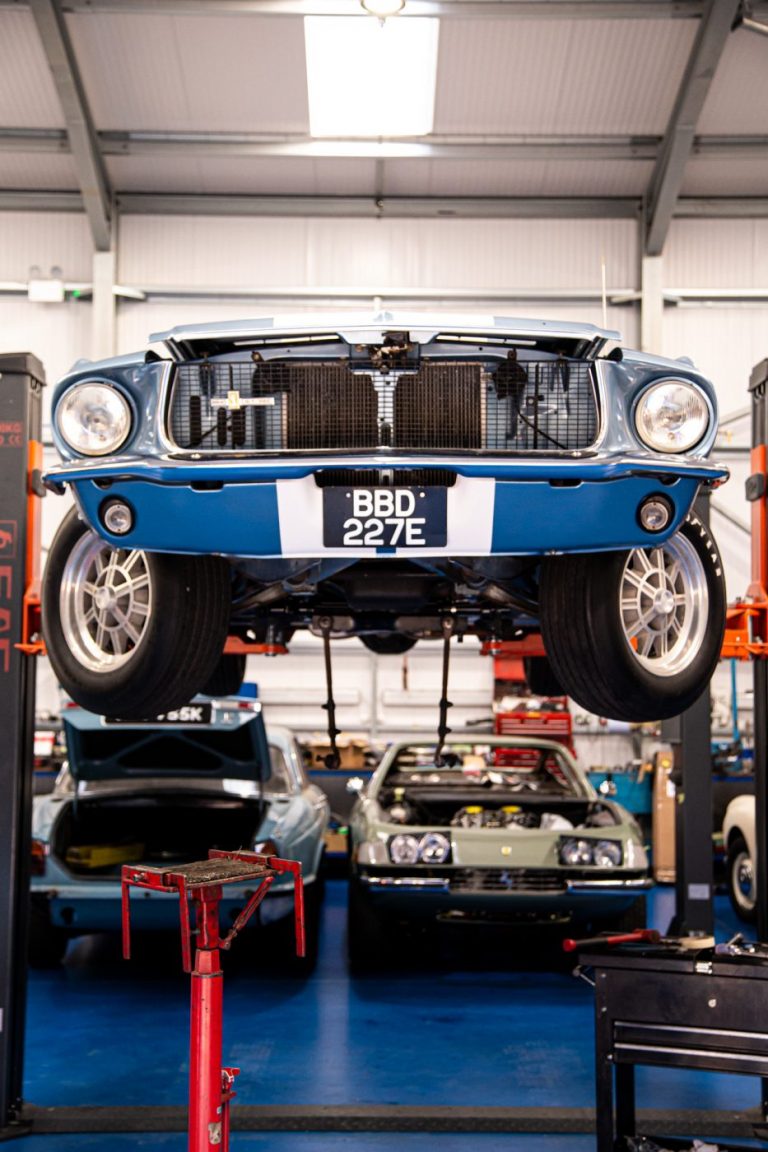
This 1967 Ford Mustang isn’t like many others. This is a right-hand drive 1967 Ford Mustang. That does make refurbishing the suspension and steering systems
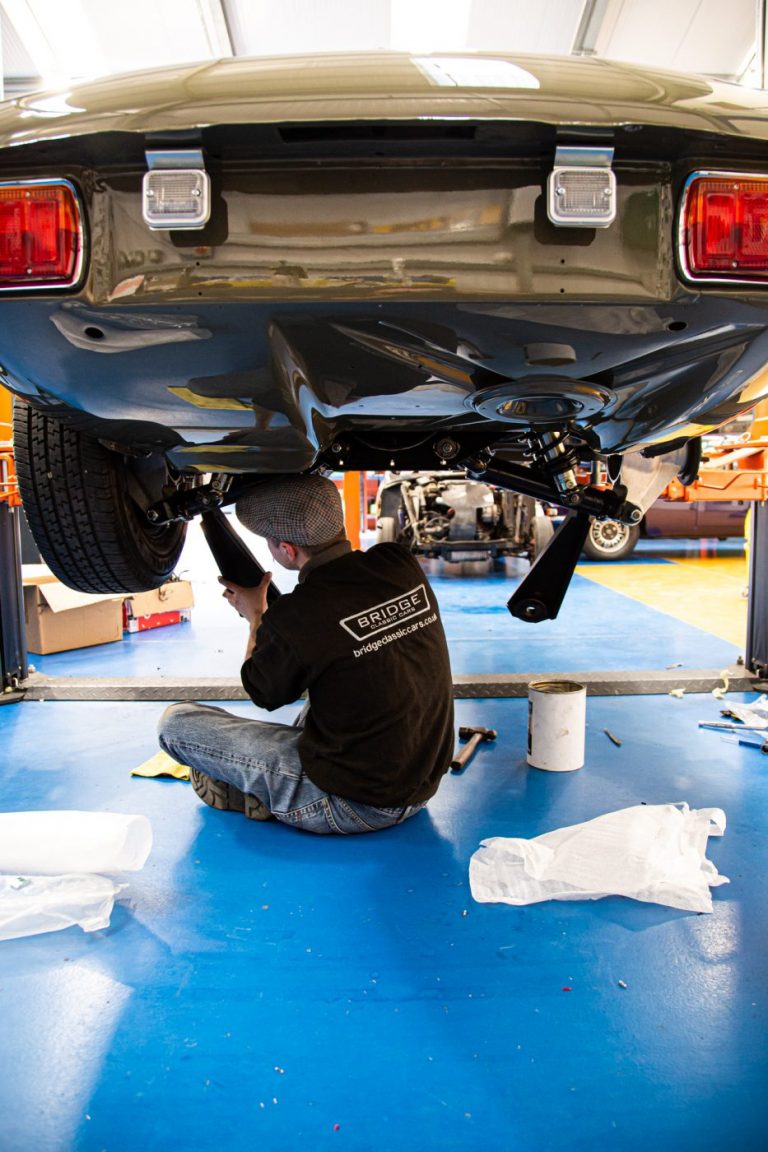
The latest update in the story of our unique and one of a kind 1973 Jaguar E Type Roadster Series 3 is happening underneath. Our
Previously, our in-house technician Lydia was busy preparing some components and pieces from the 1955 Aston Martin DB2/4 for paint.
Well, those parts have now had their first coats of primer sprayed after being carefully prepared by Lydia. Any form of corrosion whether it is surface or deeper was painstakingly assessed and rectified by our in-house body and paint teams. As you can see, the results are wonderful.
This however is not the final stage for these bits from the DB2/4. Keep a watch on our News Page for more updates on this project and others!
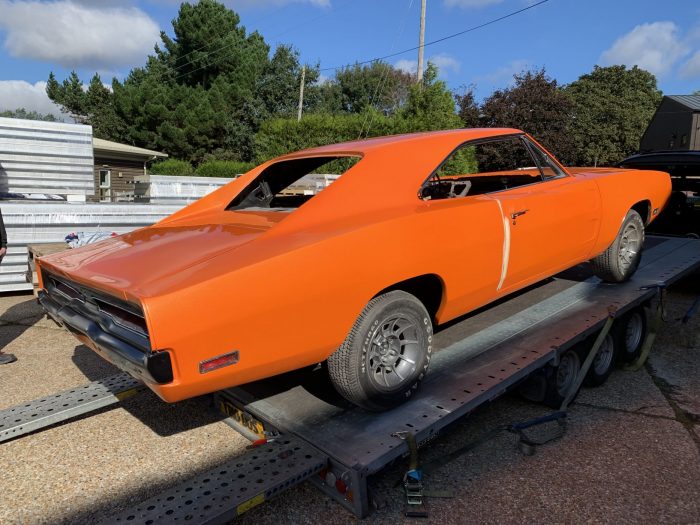

Just arrived at Bridge Classic Cars is this gorgeous 1970 Dodge Charger for interior fit out.
Expect to see more of this iconic second-generation Charger on our blog page!
This is indeed a wonderful example of 1930s excess and style. Almost industrial in its engineering but so ornate in its look. It is of course the 1930 Packard 740 Waterfield Convertible that is in at Bridge Classic Cars to have a list of jobs completed.
Thankfully, the customer supplied us with copies of the original technical manuals for the car for our technicians to work from. Scott, our in-house restoration technician, began to work on removing and adjusting the massive rear drums.
Of course with such a rare car, extreme care needed to be taken whilst removing any component from the car. As Scott gently prised the drum faces off to gain access to the shoes underneath, he carefully and methodically laid out each component that was removed from the Waterfield Convertible. Scott had noted that the drums felt a touch loose considering the size and weight of the vehicle, refering to the manual he found they did in fact need adjustment.
Once the rear brakes had been inspected, cleaned up and adjusted, Scott meticulously worked his way back to getting the drums back on this beautiful car.
At the same time as Scott was working at the rear of the Packard, John was going through his work list at the front. Carefully checking the operation of each light and noting any changes or anything untoward. The customer had made a note of the headlights not being too bright when being used. John investigated into this

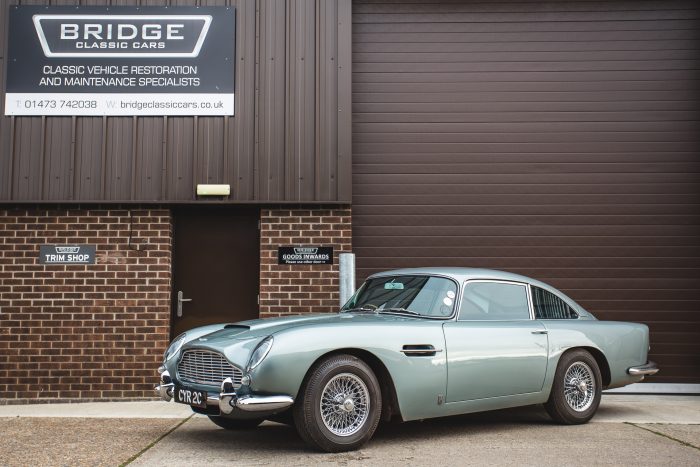
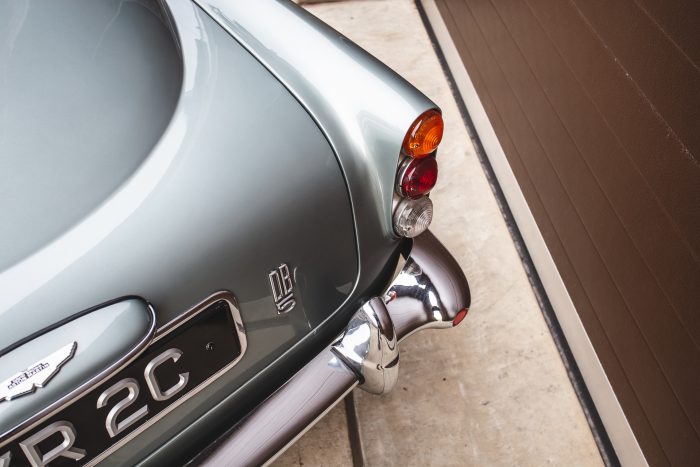
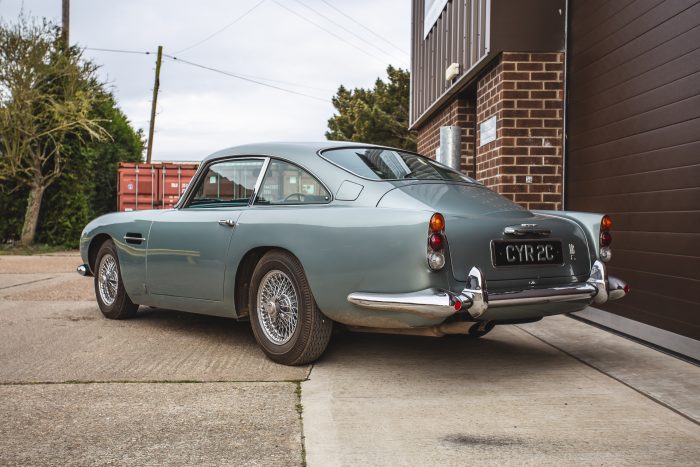
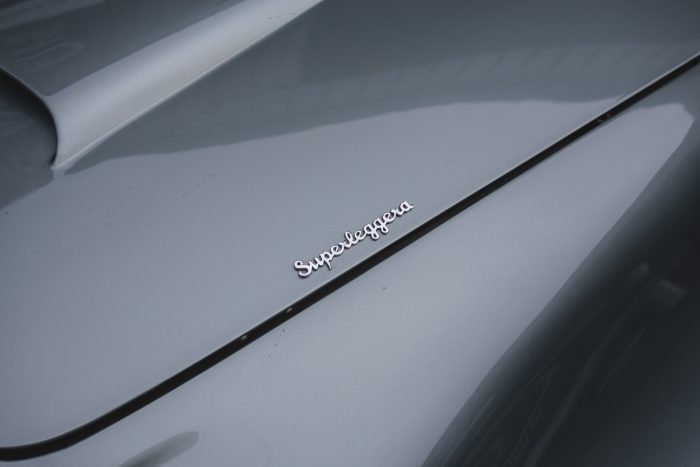

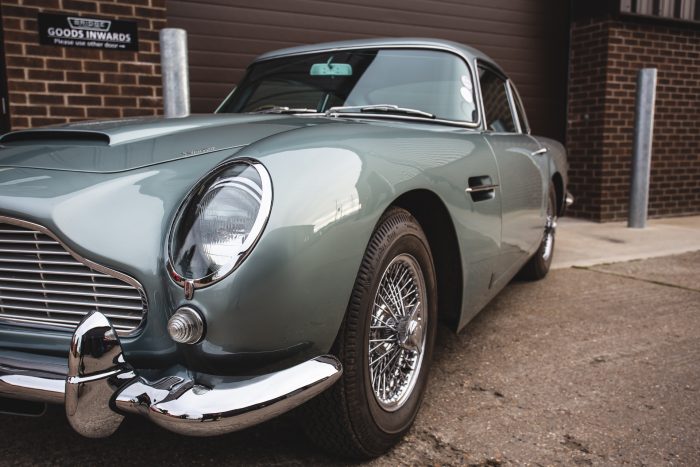
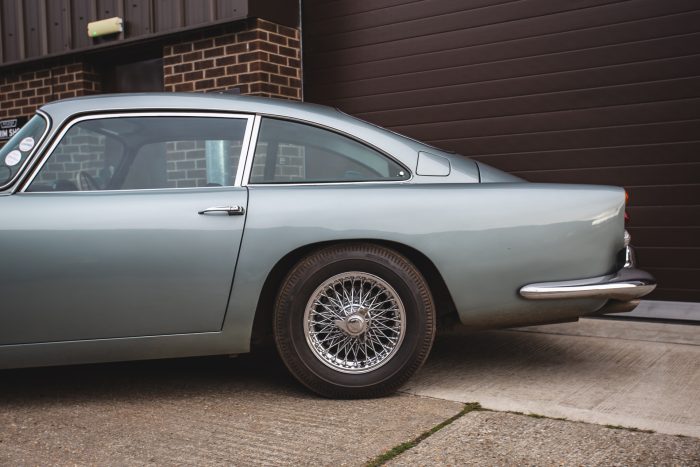
The Aston Martin DB5. Many believe it to be The Most Famous Car in the World. It’s claimed by some that over half the worlds population can tell you that James Bond, drives an Aston Martin.
The sleek, elegant lines of the DB5 made it a perfect candidate when the producers of the newly launched 007 franchise went looking for the latest car to be used by Her Majesty’s most faithful servant.
The DB5 would hit theatre screens in September of 1964, with the release of the 3rd James Bond Film, Goldfinger. This is where a now faithful audience would first catch sight of the car now known as the Goldfinger DB5.
Launched in 1963, the DB5 would serve as a replacement for the previous DB4. A long-legged, elegant GT car beloved by all and a favourite of the newly hip and happening. The DB5 used a Superleggera construction method. A sculpturesque spaceframe which keen-eyed craftsmen would then cloth in mirror-like, curvaceous panels. This appealed to the newly formed ”Q-Branch”.
At Pinewood, the designers had been working out what car should James Bond, the worlds most famous spy, drive. Ideas were bandied around a Jensen CV8, Jaguar E Type etc. But, only one car truly personified the style and the times of Flemings fictional spy. It was the DB5, with that the production the approached Aston Martin. The DB5 worked on another level as in the book Goldfinger, Bond was noted as driving an Aston Martin DB MkIII.
At first, Aston Martin was understandably hesitant at allowing their newest pride and joy to become a film star like any concerned parent would be. However, they did agree to sell two cars to the production team. The first was actually a DB5 Prototype, an earlier DB4 production car that had been modified to develop the DB5.
This prototype car would become the hero of the story. From the moment it arrived at the Pinewood workshop, the DB5 was busily modified to accept the growing list of gadgets being added to the script. For interest, in the book, the only mention of a gadget and an Aston Martin was a passage describing a smokescreen. But, for a film, it needed to get bolder and bolder.
Guy Hamilton, the film’s director, had the request which would now go down in history as one of the most memorable film lines of all time. His stepson had come to him one day and said he had seen an ejector seat in a film or a TV show. This sparked something in Hamilton. He took the idea to Production Designer Ken Adams and Engineer John Stears who said it might be possible but wouldn’t actually work, so when Connery says the famous line ” Ejector Seat? You must be joking.” Unfortunately, the crew were joking. The scene in the film was shot in multiple takes using careful angles and rigs to portray the henchmen’s unfriendly exit from the DB5. To this ever-expanding and extraordinary list, Hamilton added the revolving number plate mechanism. This famously came from Hamilton who was getting dozens of parking tickets issued against his car during production. Along with those, is the bulletproof rear screen plate and the oil hoses which drop out of the rear brake lights of the DB5.
This car (the second DB5 used for production was completely standard), was converted to become the stunt vehicle for Goldfinger. The whole conversion from DB5 prototype to The Worlds Most Famous car took a mind-blowing 6 weeks from the start of work to being delivered to set.
During both Goldfinger and lately Thunderball, the DB5s would use the number plates BMT 216A). Easily identifiable as the Goldfinger DB5s and also the number plate used on the recent DB5 Continuations known as The Goldfinger DB5s which have exact copies of the modifications to the stunt cars. These cars would then be unmodified in 1968 and sold to private owners.
But in 1995, the DB5 would return to the 007 James Bond series in the film GoldenEye. The DB5 breaks cover at the start of the film by going head to head against a Ferrari F355 GTS driven by assassin Xenia Onatopp. This particular DB5 in GoldenEye runs the registration BMT 214A. A nod to the original cars used in the earlier films. 11 years later, the DB5 would make its appearance in the first of the Daniel Craig era of James Bond with Casino Royale (the first of the Bond novels by Ian Fleming). However, this car according to Bond aficionados has nothing to do with the legendary BMT 216A. Seeing as how it’s a left-hand drive car and is wearing Bahamian numberplates.
For the world to see BMT 216A we would have to wait until 2012’s Skyfall. This is the car bond uses to escape back to his family home in Scotland. It’s also famously the film that gets destroyed out on a boggy crag. Thankfully, a series of scaled miniatures were used for this and no original DB5s were harmed during production. However, in the 007 film Spectre, the shell of the DB5 can be seen in Q’s workshop. With Bond raising a smile as he walks by his beloved DB5. Then at the end of the film, he is seen powering his way through Whitehall in London to a wonderful chorus of the 4 litre Straight-Six.
That brings the cinematic lineage of BMT 216A (the Goldfinger DB5) right up to the modern-day. In the latest film, No Time to Die, Bond is seen back behind the wheel of his Silver Birch DB5. This time, however, it is armed to the teeth. Machine guns behind the headlights but most interestingly is the faint outline of an ejector seat panel over the passenger seat… a clue perhaps? This car though is actually using the numberplate A426900, possibly one of the options from the original revolving idea Guy Hamilton proposed for the car back in 1964.
Famously though, in 1997 a very certain DB5 used during the production would make world news for its life away from the silver screen. In 1997, a DB5 known as The Road Car was being stored at an aircraft hanger belonging to its then owner in Boca Rotan, Florida. One night, however, the car disappeared. Sparking furious media debate worldwide as to where the car really is. Many believe the car to have had to have been destroyed due to its famous number. This car appeared in all of the press for the early films as well as cameo’s in multiple films such as Cannonball Run.
So, that brings all of us up to speed about the first Bond car. But, was it?
Bridge Classic Cars have been working on a bit of a modern classic recently. This 1998 Honda Integra Type R has previously had a list of metal work done to it by our in-house body shop along with a full engine bay clean up and resprayed in its factory Championship White.
Now though, it is time for the back and the top of the car to receive the same treatment. The rear quarter panels needed some attention from the Bodyshop so to make sure it all looked as good if not better than the day it arrived on the showroom floor 23 years ago.
Our in-house paint expert Chris carefully prepared each panel to make sure the best results were achieved for our customer. The results are absolutely sensational.
Congratulations to the winners of our Bridge Classic Cars Competitions 1974 Triumph GT6 who recently took delivery of this wonderful example of a Magenta GT6.
The GT6 was unloaded from our covered transporter in front of the house much to the excitement of John Waud, whose winning ticket of 153 made him its new owner.
We hope that he has many happy miles enjoying this iconic sportscar.
You could also win yourself an incredible classic too! Head over to our Competitions page to find out more.
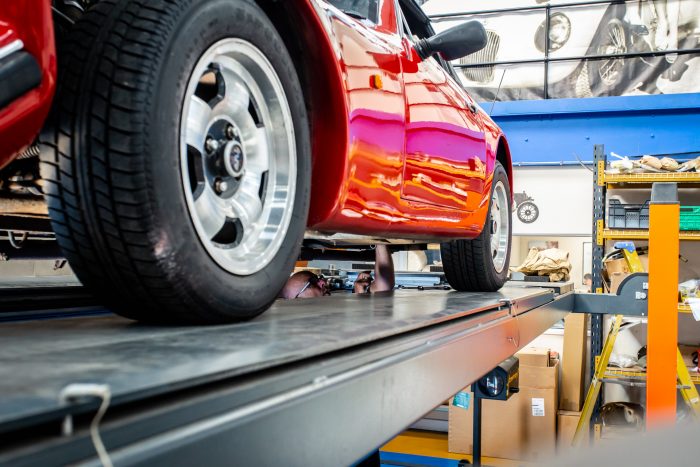
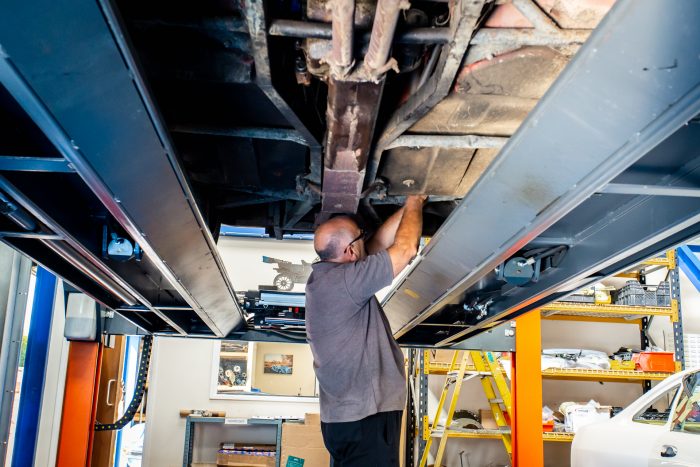
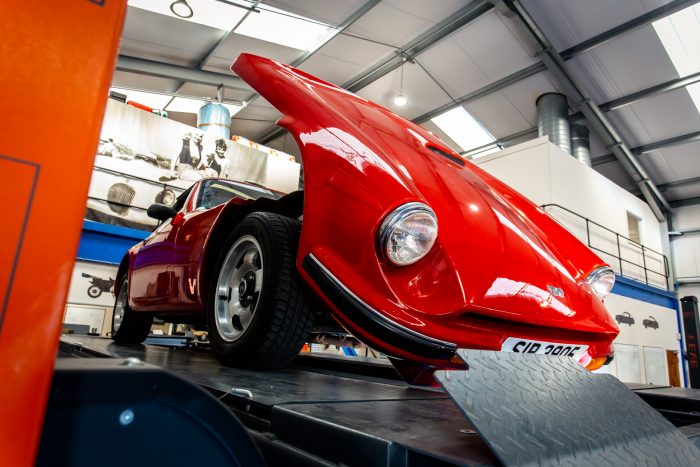
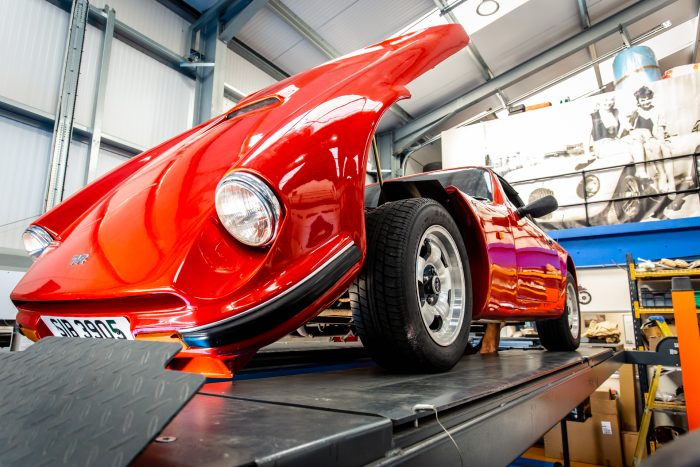
Recently our technician Paul completed a full service and inspection on the 1989 TVR S2 2.9 V6 in at Bridge Classic Cars.
As part of all inspections, every part of the car was thoroughly checked not only for safety but also for any cosmetic issues that were present on this special 1980s sportscar. On his report, Paul had noted down that the rear shocks had a slight leak but also that one of the front indicator lenses had cracked. These were immediately ordered through our parts team so anyone driving it could have full confidence in the knowledge that nothing had been missed.
This particular 1989 TVR S2 2.9 V6 though has got a bit of a secret. And, if you want to find out then just click the link below and sign up for our mailing list to know about it before anyone else.

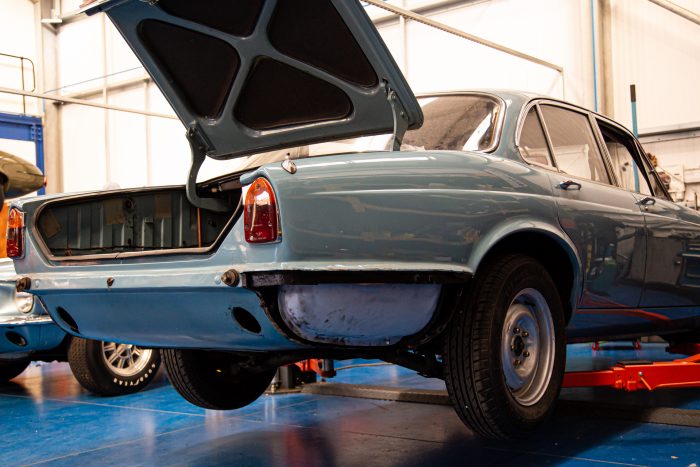
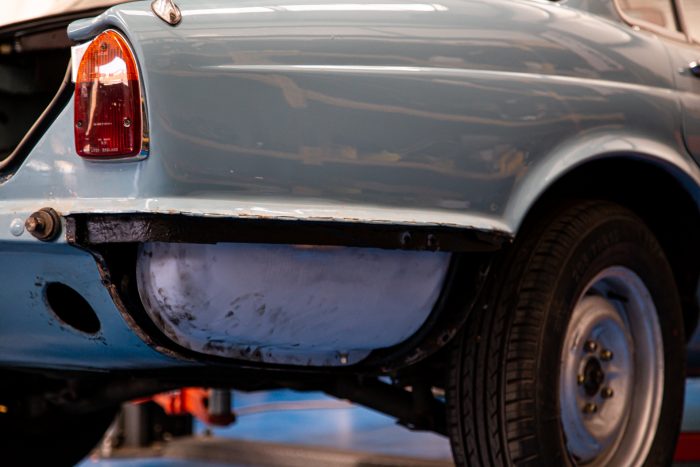
The replacement fuel tanks are now secured in their new home at the rear of the 1971 Jaguar XJ6 at Bridge Classic Cars.
After much hard work and careful approach by our incredibly experienced technician Dave, the XJ6 can now start to be fitted back together. As you may have seen previously, Dave was working on converting a set of later style tanks to work on this earlier car. Some of the fittings and placement for a series of vents and inlets were in slightly different places over the production run of these wonderful cars.
As you can see from the photos, the tanks nestle up under the rear quarter panels in a very tight fit. Dave worked his magic gained from years of experience to ensure they were safely fitted and secured for the owner.
There’s more to come from the XJ6 so keep an eye out on the News Page of Bridge Classic Cars.
It’s been a little while since the last update on the 1987 Daimler Double Six currently in with us at Bridge Classic Cars.
Since the last time, this Daimler has had all its brightwork and trim removed for our in-house restoration team to assess anybody repairs that need to be made to preserve this classic example of British luxury for many more years to come.
Tamas, one of our restoration technicians, has been carefully removing and safely storing each piece of trim that has been taken off the car. Methodically working his way around the entire car until it as you see in the photos.
Since the tear-down has been completed, expect to see more updates very soon on the News Page about this much forgotten Classic.
The MG B Roadster. A staple of British Sportscars for decades. Beloved by many for its small, lightweight feel but its solid reliability.
This particular 1973 MG B Roadster has come into Bridge Classic Cars for recommissioning. It will be assessed by each of our in-house restorations teams to determine what needs to be done and in what order.
It’s lovely to see a car that is still so original but has led an honest and enjoyed life in its previous years. But, the time has come for this iconic sportscar to be bought back to its former glory.
One of the most recognisable parts of a Jaguar E Type is its long, elegant bonnet. It is also one of the most beautiful shapes of any car. That is certainly true with our Fern Grey 1973 Jaguar E Type Series 3 Roadster.
After the bonnet had come back from being painted and finished by our in-house paint team here at Bridge Classic Cars, the ultra-rare colour looks absolutely phenomenal. Then once Matt and Chris in the paint team were happy with the finish and high sheen of the bonnet, it was handed over to our restoration technician Scott.
Scott has been part of this project all the way through its work. He knows the car probably better than anyone due to the number of hours he has put into this single car.
Carefully, Scott began the process of putting in the grilles. Along with those was the indicators, being gentle not to mar any of the stunning work Matt and Chris have done.
The headlights complete that famous E Type look. All hand-wired by Scott to make sure the cabling runs for the harnesses fitted perfectly and worked without issue.
An icon of 1980s style and presence. The legendary BMW 635CSi.
This particular example is a 1984 car. the E24 635CSi was (and still is) one of the most desirable classic cars for all ages.
This car is in with us at Bridge Classic Cars to have some paintwork and bodywork issues assessed by our in-house restoration teams and come up with a plan to get this wonderful long-legged luxury coupe back to its former glory.
But after all that has been completed. What’s going to happen with this stunning car?
Keep an eye out on our News Page for more updates on this legendary car.
October 16-17th will see the annual running of the Goodwood Members Meeting. Bridge Classic Cars will be there!
Head over to Stand 47 (Just outside the Bonhams Arena) to pop in and see the incredible work we have on display.
Save the date and get your tickets here!
Scott has been hard at work on the one-off 1973 Jaguar E-Type Series 3 Roadster that is being built here at Bridge Classic Cars.
This marks a milestone in the cars journey. Since this is a bespoke E Type project for a very special client, it has had a very bespoke suspension set up. But, to make sure everything fits and works as it should, the car needed to be down on the floor. This meant fitting up its wheels and starting the suspension set up.
Once this unique E type was down on the ground Scott could begin work on adjustment to the set-up. This is not the final set-up as we still need to have everything in the car before its complete suspension can truly begin. But, Scott wanted to check there would be no interference from any components as they cycled and as they rotated.
Success. Everything fitted just as Scott had hoped and as intended like any of the Bridge Classic Car Projects.
Next up for Fern Grey, is getting started on the wiring…
The art of interior trim is something our in-house trim experts have mastered over years of experience.
A great example of this is the door cards on our 1987 Mercedes 500SL. These are all being entirely made in-house in our trim shop. The fit and finish of our interior pieces is world class thanks to our amazing team.
The door cards themselves were fabricated from scratch in order to best match the originals ensuring an extremely close fit to the same standards as they would have left the Mercedes trim shop in 1987, if not even better.
All of the associated trim pieces for the doors are also being retrimmed with the same level of care and attention to detail as the rest of the car which is currently under going full restoration here at Bridge Classic Cars.
Keep a look out on our News Page for more updates on the masterpiece of German engineering.
This 1984 Jaguar XJ has recently had a respray done on it by another Bodyshop.
It will be coming in soon to us here at Bridge Classic Cars to have a look at the Bonnet and Decklid. Our in-house paint and bodywork teams will assess the components and then work out a plan to get this stunning old Jag back to top condition.
Keep a lookout on our News Page for more updates on the 1984 Jaguar XJ.
This is a perfect example of the level our in-house trim experts at Bridge Classic Cars work to.
The first photo shows what was left of the rear seat of the 1956 Jensen 541. There wasn’t a lot left after years of uncovered storage. But, thankfully our in-house teams could disassemble the old seat to then reverse engineer the piece.
Kath and Brian managed to completely recreate the wooden base piece by piece using the same techniques as the original trimmers. Once the wooden base had been built up and fixed together, it was time to start hand shaping the foam.
The foams of the seats have to be hand faired to make sure it flows perfectly once the covers are made for this particular car. Being able to reference the previous 541 series interiors, our in-house trimmers got the shape of the foams spot on.
Next up for the interior of the 1956 Jensen 541 will be its interior colour choice and the trim team will begin to make its covers.
With American V8s the first thing you notice in the engine bay is the Rocker Covers.
One of the most iconic of these is the historic ”Cobra by Ford” covers that graced the tops of some of the most legendary race and sportscar engines the American continent has ever produced.
Our 1967 Ford Mustang has got these very covers fitted on top of its small-block V8. These covers will be refinished in-house by our paint and body teams to make sure that when they go back on, they look just like, if not better, than the day they were fitted.
It’s not every day that you get asked to service such a rare and unique piece of American pre-war history.
But when the customer arms us with the complete checklist to carry it out, there’s no question on what needs doing. One of our most senior techniains (and workshop controller) John, took charge of working on the vast Packard. Beginning with a full inspection of components and systems while then working his way through each of the service items listed in the book.
When it comes to servicing and maintaining classic and vintage vehicles, Bridge Classic Car has a vast amount of history and knowledge in these matters. From the smallest jobs to the largest restorations, Bridge Classic Cars in Suffolk, UK can always lend a hand.
The last time we showed you the assessment done on the wonderful 1990 Range Rover CSK that we currently have in at Bridge Classic Cars for sympathetic restoration.
After the assessment was done by our technician Mauro, the first port of call was to try and get the 3.9 litre V8 to fire into life. From the assessment, we could see all of the soft fuel lines had cracked and were too brittle to attempt to be pressurised. For that, Mauro fitted up a testbed fuel system to ensure the Range Rover would get all the fuel it could need.
As mentioned in a previous blog post, the starter motor had failed. Before rigging up the fuel, Mauro installed the brand new starter motor to the engine to make sure the big V8 would turn over well enough to be fired.
With the testbed system in place, it was a case of adding the fuel, the air and spark into the chambers. Success. The now 31-year-old V8 roared into life inside of our workshop.
Next on the list of mechanical checks for the CSK while it’s here at Bridge Classic Cars, is to see if the Range Rover will move under its own power…
There is always a winner with our live draws. On Thursday the 23rd of September that just happened to be Ian Spellman and Rob Richardson.
The team at Bridge Classic Cars arrived as the sun slowly began its drop towards the horizon to prep the location ready for the 7 PM start. The scene was set for a very lucky night for two unknowing people…
First drawn on the live stream was Ian with the winning ticket of 4851 which secured him the stunning 2003 Vauxhall VX220. In a strange quirk of fate, when Charlotte rang Ian to tell him the good news he was actually halfway through his tea! Not a bad start to a Thursday evening for Ian.
Next was the draw of the stunning 1958 Triumph TR3A. As the random number generator whizzed around, you could feel the excitement build. One of 4999 possibilities, each one ultimately changing someone’s automotive life. Lady luck decided that night to choose Rob Richardson to be the next custodian of this wonderful British Sportscar. As part of our draws, we do try to phone the lucky winner. Unfortunately, Rob didn’t answer the phone. But, when he does check his voicemail he is in for quite the surprise…
Also revealed during the live draw was more information about some of the upcoming competition cars. Namely the 1983 Ford Capri and the 1989 TVR S2 2.9 V6. The Capri is available to enter right now over Bridge Classic Cars Competitions (remember, someone, has to win these icons) so head over and enter now!
The TVR will be up very soon so keep an eye out on our Social Media pages on Facebook and on Instagram
To rewatch the Live Draw in case you missed it just click here!
This is probably the nicest 1998 Honda Integra Type R you will see. After having all its metalwork done, it was turned over to our amazing and talented in-house paint team to work their skills on.
This Integra Type R had the engine bay prepped for painting the last time you saw it on an update. Now, thanks to our in-house master painter Chris, it is back out of the booth and looks absolutely stunning finished in its original Championship White under the late summer sun.
Next up for the Integra is to begin putting this undervalued future classic back together! Look out for more updates on the News Page.
We have a rare treat coming into us here at Bridge Classic Cars very soon. This lovely little 1971 Morris Traveller 1000.
This piece of British motoring nostalgia is coming in to be assessed by our in-house restoration team to see what this wonderful little car will need to be in tip-top condition.
Expect to see more on this fantastic 1971 Morris Traveller 1000 at Bridge Classic Cars in Suffolk, UK soon on our News Page.
Time for an update on the interior of the 1956 Jensen 541 we have here at Bridge Classic Cars.
In the last update on the interior of this particular 541, our in-house trim shop had stripped the original seats back down their bases to assess their condition. Also, the colour selection pallet had been proposed to this very lucky customer.
Now, with the seats back to the simplest form, our in-house trim specialist Kath could begin to form the bespoke foam-work that makes up the backrest and base cushion on these unique handbuilt sportscars.
Each component of the interior is entirely hand built by our in-house trim experts.
For more updates, keep a look out on our news page.
This lovely, honest 1970 Land Rover Series III has just arrived at the Bridge Classic Cars workshop in Suffolk, UK to begin its restoration journey.
This particular Series III Land Rover will be given a full restoration for its devoted owner by our in-house restoration technicians. This wonderful little off-roader has been used and enjoyed for many years. But, now it’s time to get her back to her former glory if not better.
Keep a lookout on our News Page for more updates on this incredible 1970 Land Rover0 Series III.
The hen’s tooth that is our 1965 Amphicar.
A lot of love and time has gone into making sure this half car/half boat is ship-shape and bristol fashion for its next lucky owner. On a glorious summers morning, our in-house marketing team headed to our favourite location at RAF Bentwaters to shoot this rare classic for Car & Classic Auctions.
After carefully laying the roof back into its hideaway, we set out across the historic airbase to shoot against the high sun. Carefully moving this unique and rare piece of automotive history into position, across the centreline of the runway, we could then begin.
Making sure every surface had been cleaned down to the best that we could, Freddie began to methodically move his way around the car frame by frame and angle by angle. This 1965 Amphicar has been at Bridge Classic Cars for a while now whilst we perfected its running and got it back into a condition for it to be sold by Car & Classic Auctions very soon hopefully to a very lucky and excited enthusiastic owner.
The sunlight radiated from this little white seafarer. The interior glowed against the harsh summer light as it beat down onto the tarmac. For the photos, it allowed Freddie just the right amount of diffused light to be able to accurately capture this rare treat for its auction.
If you would like the chance to own this amazing piece of history, then head over to Car & Classic Auctions to keep an eye out for this once in a lifetime chance to own the 1965 Amphicar.
Previously on the 1973 MG B GT V8, we were installing the electric fans to help keep that freshly rebuilt V8 cool. Another integral part of the engine is its oiling system.
Our master engine-builder Ady fitted a remote oil filter housing to the MG’s engine bay. To help with the oil feed of the refreshed V8 in the MG B, he needs to add a specialised small fitting to connect up to the hardlines.
With the fitting now in place and hardlines bent up to meet the new fitting, it could be installed into the engine bay safely tucked out the way.
Next up for the MG B GT V8 will be its first fire. Keep an eye out on the News Page for more updates.
This 1967 Ford Mustang isn’t like many others. This is a right-hand drive 1967 Ford Mustang.
That does make refurbishing the suspension and steering systems a little bit trickier. But, it’s nothing our in-house restoration technicians can’t handle. The conversion was done on the car prior to its history with ourselves, apparently done during the vehicles life done in the Phillipines.
Our Technician, Paul, has been slowly taking apart the steering rack in preparation to be rebuilt along with its suspension set up.
We are currently sourcing replacement pieces for the vehicle thanks to the detailed nature of the assessment on each component of this unique Mustang.
The latest update in the story of our unique and one of a kind 1973 Jaguar E Type Roadster Series 3 is happening underneath.
Our amazing technician Scott has been fitting up the rear arms to the E Type to work alongside its GAZ adjustable coil-overs. There has been lots of measuring, and checking of clearances to make sure that all the components underneath this Fern Grey one-of-a-kind E Type will work together and give the lucky owner a true confidence-inspiring driving experience.
Scott has worked extensively on this car. Spending his time to make sure that every system compliments the next and works seamlessly in terms of its dynamics.
Check in again soon for more updates on this unique Jaguar at Bridge Classic Cars.
Bridge Classic Cars are award winning Classic Car Restoration and Maintenance specialists. Your pride and joy is in safe hands with our expert Classic Car Technicians. Take a look at our awards here.